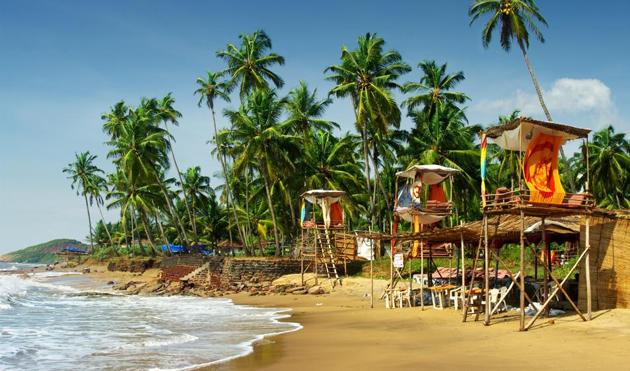For tourism, here is an Incredible India 2.0 plan
The pandemic has affected the sector. But it has the potential to become the biggest employment generator
The coronavirus pandemic has impacted every sector, but perhaps, the travel, tourism and hospitality sectors have been most affected. Which is why, with the proper compliances, safety and sanitisation measures, and Standard Operating Procedures (SOPs) for responsible reopening being issued, these sectors should now resume. The time for recovery is around the corner.

In his Independence Day speech last year, Prime Minister (PM) Narendra Modi emphasised the importance of making India a global hub for tourism, urging each citizen to visit 15 tourist destinations in India by 2022. With an inward focus on travel, we must convert this into an opportunity and advance our domestic tourism and hospitality sectors.
Travel, tourism, and hospitality have an immense multiplier effect on the economy. These are sectors that can exponentially create jobs, and India needs high-quality job creation now. Travel and tourism has employed more than 42 million people in India or accounted approximately for 8.1% of the total employment opportunities. Last year, it contributed 9.3% to India’s Gross Domestic Product (GDP), and received 5.9% of total investments. It can accelerate the path to 9-10% annual growth and add millions of high-quality jobs each year. This is necessary, given that 72% of India’s population is below 32 years, and the average age is 29. Tourism is the perfect fit for the future generation.
India is ranked third in the World Travel and Tourism Council (WTTC)’s Travel and Tourism Power Ranking, which assesses 185 countries on the basis of four key sector ingredients: Total travel and tourism GDP, foreign visitor spending, domestic spending, and travel and tourism capital investment. India is now ranked behind only China and the United States (US). The World Economic Forum conducts a biennial study across 14 vital parameters, and India has improved by 12 places over the last two years, now ranking 40th out of 136 countries in terms of travel and tourism competitiveness.
This is encouraging and makes the sector an essential cog to the New India growth story. The sector is relatively untapped. An added aspect of the travel and tourism sector is that not only does the sector provide high-quality jobs and countless synergies, it also enhances investment into India, accelerates development, and showcases India’s unique treasures.
Systematic tourism promotion campaigns will be important in the near future. There are two that I have helmed, which brought the spotlight on India’s attraction for tourists. Incredible India and God’s Own Country blended potential with awareness, allowing Indian entrepreneurs, global entities, domestic and foreign tourists, and the government machinery to work together and accelerate growth in the sector. A domestic-focused Incredible India 2.0 that showcases what the nation offers to Indians could be the post-pandemic plan for the sector. India, after all, has amazing diversity, from 38 Unesco World Heritage sites to the Himalayas to pristine beaches, and plenty of other natural assets. Besides that, India’s achievement in tiger population conservation has led to a rise in the tiger population to 2,967 in 2018 from 2,226 in 2014. This is an increase of 741 tigers or nearly 25%, making India home to around 70% of the world’s tiger population.
Prior to the pandemic, work on transportation to allow access to many of India’s hidden treasures was paying off. The UDAN scheme has been a huge success, and now the government can focus on the earlier plans of launching 100 tourism-oriented trains. Also adding to the ease of access is the work that has been done on highways, roads, and ports, highlighted by the Bharatmala and Sagarmala projects. There has also been work done to enhance airport capacity and expand regional connectivity. The Airports Authority of India has estimated capital spending targets of more than ~20,000 crore by 2022, and more than 70 regional airports that are under-utilised will be developed.
The Holistic Island Development plan is an ambitious policy directive focusing on the Andaman & Nicobar (A&N) and Lakshadweep Islands. It addresses tourism-based projects that automatically create jobs for the islanders, and enhance connectivity through key infrastructure projects.
Until the pandemic, the restaurant industry was a dynamic sector. Expect to see them rebound, starting with Unlock 1.0, with delivery services such as Zomato and Swiggy having been involved in essential goods deliveries and maintaining the supply chain for food delivery throughout the lockdown. India has recently become a major player in the culinary ecosystem, making restaurants a ~4,25,000 crore market. They create millions of jobs and have a massive multiplier impact as well.
Travel and tourism will be the key driver for high-quality employment and unparalleled sustainable growth for the next 30 years. Despite challenges, as we responsibly reopen, the opportunities for the sector to help growth will continue to increase, and the domestic demand will help build confidence in the sector’s revival. The pandemic has only altered the progress, not stopped it. A responsible and phased recovery is imminent, and there is no better time for it than now. The positive impact of the sector will span all the downstream and upstream benefits that accompany growth in this sector. This has the potential to become the biggest job creator for India.
Amitabh Kant is CEO, NITI Aayog
The views expressed are personal



